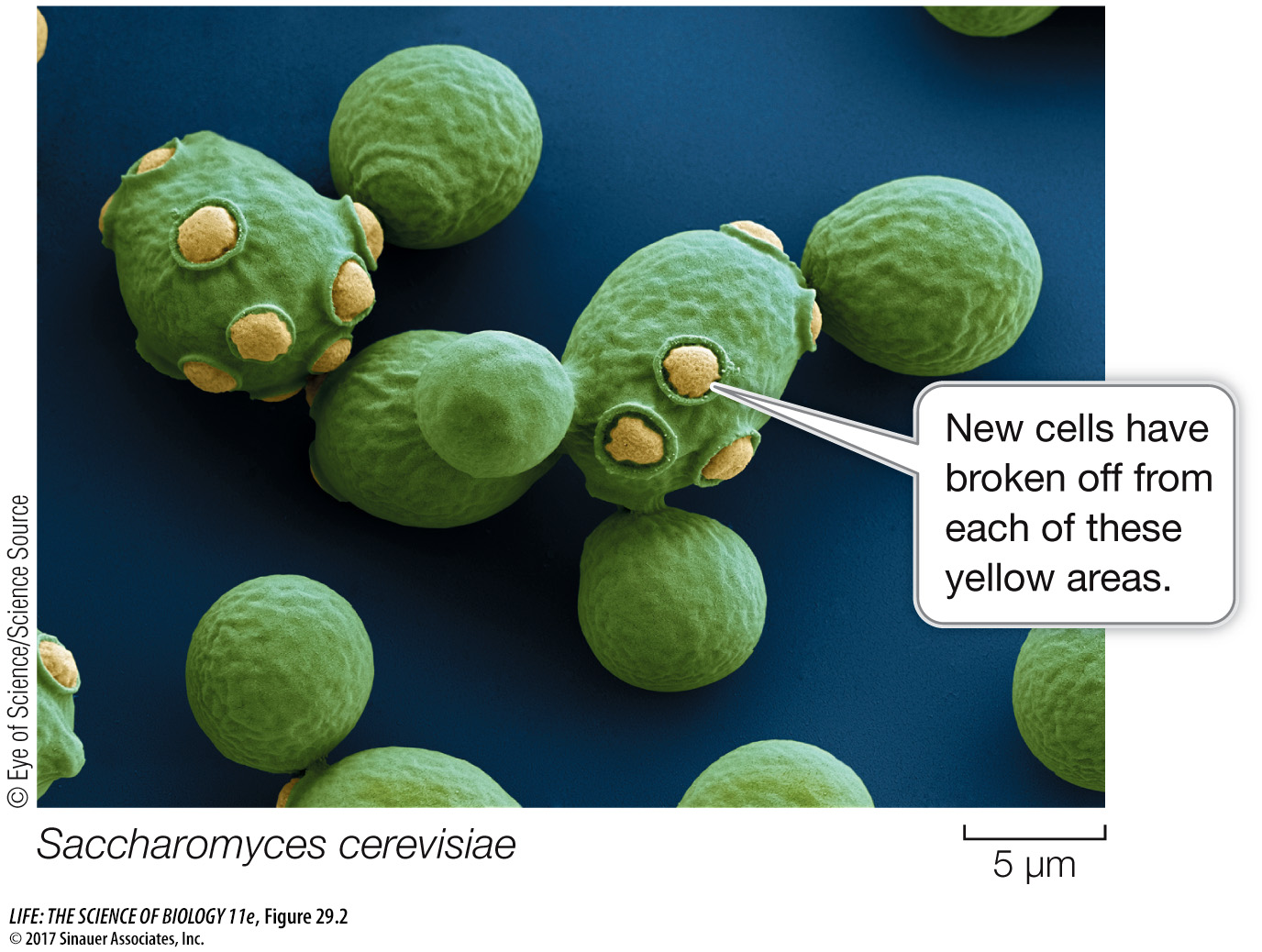Yeasts are unicellular, free-living fungi
Most fungi are multicellular, but single-

The ease with which many yeasts can be cultured, combined with their rapid growth rates, has made them ideal *model organisms for study in the laboratory. They present many of the same advantages to laboratory investigators as do many bacteria, but because they are eukaryotes, their genome structures and cells are much more like those of humans and other eukaryotes than are those of bacteria.
*connect the concepts Why we select and study a variety of model organisms is discussed in Key Concept 17.3. Each model organism has distinctive advantages and disadvantages. The features of yeasts make them ideal for some investigations but impractical for others.